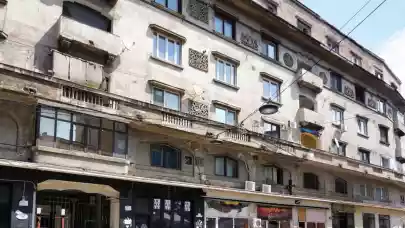
Although anti-pandemic measures were still lingering on the Czech retail market at the beginning of last year, an early return to normal was expected. However, the war in Ukraine has fundamentally influenced further economic development, especially in the countries of Central Europe, including the Czech Republic. The rapid rise in prices (inflation increased by 15.1% year-on-year) and energy expenses were met by a further decline in already weakened customer confidence. How did this affect shopping centres in the Czech Republic? And what is the current sentiment on the market not only among customers but also the retailers themselves? CBRE tried to answer these questions in its annual Shopping Centre Index analysis, which is complemented by two current surveys focused on the development of customer behaviour and expectations on the part of retailers.
Key findings
- The footfall in regional shopping centres increased by 23.5% year-on-year
- The dynamics of the development of the average basket slowed. In spite of this, there was still a year-on-year increase of 5.9%
- Turnovers recorded significant growth, both year-on-year (+31.5%) and compared to 2019 (+11.1%)
- The vacancy rate decreased slightly from 4.4% in 2021 to 4.1% in 2022
- Rent increased by 4.9% year-on-year
“Despite numerous forecasts of major retail restructuring after the Covid-19 pandemic, the structure of shopping centres and the distribution of individual retail sectors have remained essentially unchanged. Fashion and Food continue to dominate the overall area with about 25%, followed by 10% in Specialty Retail and the category of Sports with 8%,” comments Klára Bejblová, CBRE’s market Retail Research Consultant for the Czech Republic and Europe, and continues: “From the perspective of the dynamics of development last year, the largest year-on-year increase in the rental space took place in the Services sector (+9%) and Food & Beverage (+5%). Other significant changes were noted in the category of Fashion, especially from the perspective of the change of tenants. On the one hand, some transactions were concluded due to the reduction of lower-performing branches or the acquisition of selected brands. On the other hand, a number of popular brands and discount chains have expanded.”
Footfall in regional shopping centres last year increased by 23.5% year-on-year
Compared to the values from the pre-Covid year of 2019, however, it fell by 11%. The first quarter was also marked by protective measures, while there was an increase in the second, based on delayed consumption and partly also the migration wave from Ukraine. By the end of the year, however, the footfall decreased slightly due to the reduction of spending and decreasing consumer confidence.
“A current CBRE survey among customers confirmed that Czechs most often go to shopping centres for shopping in hypermarkets or supermarkets, even several times a week. This is followed by clothing shops and restaurants, fast food establishments and cafés. These are the reason that up to 13% of the respondents come to a shopping centre at least once a week. A generally higher frequency is evident among residents of Prague and other regional cities, as well as in the younger generation aged 18 to 25,” explains Michaela Šoková, Head of Retail Marketing at CBRE.
Despite the lower traffic levels, turnovers recorded significant growth
On average, a visitor spent CZK 268 during one visit to a shopping centre last year, which represents a year-on-year increase of 5.9% and almost a 25% increase compared to 2019. Turnovers increased both year-on-year (+31.5%) and compared to 2019 (+11.1%). “Four of the nine main sectors saw double-digit growth compared to 2019. The leader was the Service sector, which improved by 35%. Travel agencies, which increased their turnover by almost 90%, played a major role in this. After significantly limited operations over the previous two years, the recovery in hairdressing and beauty salons was evident, but the turnover did not rebound from the pre-pandemic period (-3%). Even greater success in the category of Services was mainly dampened by the turnover of pet stores (-9%), where we observe a continued reduction in sales due to online shopping,” states Klára Bejblová, and adds: “The second-largest increase in turnover was recorded by the Electronics sector (+20%) for almost all concepts. Speciality Retail, which had the best performance dynamics in the previous two years thanks to pharmacies, optics and chemists, continued to grow, posting 19%. In addition, the Food & Beverage sector returned to double-digit growth, achieving a 13% improvement compared to 2019.”
The prestigious Fashion sector experienced a 1% decline in turnover compared to 2019, though when compared to the previous two years, it is a significant improvement. The subcategories with the best dynamic included fashions for young people (+9%) and for men (+12%). On the other hand, clothing and accessories stores for women, which are increasingly competing with mixed fashion brands offering women’s collections, had the weakest development (-24%).
“The generally positive trend in increasing turnovers is confirmed by the results of our May survey among retailers. They show that 70% of retailers currently account for 100-120% of the sales level from 2019,” says Jan Janáček, Head of Retail Sector and Retail Leasing at CBRE, and adds: “However, boundless optimism reduces the long-term increase in operating costs on the one hand, and the fear of losing the customer, and consequently of his reduced purchasing power, on the other hand. Therefore, it is worth paying attention to the approach of retailers to raising prices. Surprisingly, despite higher inflation in the Czech Republic, domestic retail, with the exception of groceries, has increased less vigorously than retailers in the CEE region. In particular, 42% of the surveyed brands operating in the Czech Republic increased their prices in the range from 10 to 15%, while brands in the CEE region increased by 15 to 20%. At the same time, less than a quarter of respondents raised prices above 20%, which none of the Czech respondents have done.”
And this decision turns out to be the correct one because the domestic customer is very sensitive to prices. “The current price increases affect the purchasing decisions of 96% of the respondents. Regardless of gender, age or region, it is clear that prices play a significant role. Most respondents said they are currently limiting spending in restaurants, fast food or cafés (83% of respondents) and cinemas (80%). Price increases also contribute to increased interest in loyalty programmes. They are used by the vast majority of respondents (93%), which is ten percentage points higher than last year,” adds Michaela Šoková.
All sectors saw growth in rent
The average year-on-year increase in rents in regional shopping centres in 2022 was 4.9%, which put it above the level of European and Czech indexation. This would indicate an increase of about 10% for newly concluded lease agreements under standard conditions, but discounts on rent from 2021 were partially reflected in last year’s prices. For this reason, the average rent increased by 4.2% compared to 2019. “The highest dynamics, with approximately 9% growth, were in the Special Food, F&B and Specialty Retail sectors. While for Special Food it was mostly a correction of the lease after last year’s discounts, Speciality Retail shows an increase in the average rent over the long term. The Services and Fashion sectors saw an identical 2% increase year-on-year. However, while average rents in the Services sector rose by more than 9% compared to 2019, they declined by 4% in the Fashion segment. This is mainly due to the long-term pressure on rents caused by lower competition in medium and large units forming anchor tenants,” explains Klára Bejblová.
The vacancy rate in regional shopping centres in the Czech Republic decreased slightly from 4.4% to 4.1% last year. In 2019, the average vacancy rate was 3.5%.
Shopping centres versus online shopping. Do brick-and-mortar shops have cause for concern?
The pandemic has greatly increased interest in e-commerce. The domestic market is advanced in this respect: The share of online sales in total retail sales is 17%. A third of Czech retailers participating in the CBRE survey report that their share of online sales is between 21 and 30% (versus 11-20% in the CEE region). In both groups, Fashions and Food & Beverage are growing the fastest, indicating new shopping habits acquired during the Covid period. “The customer survey results reveal that up to 87% of respondents shop online, almost seven percentage points higher than last year. The highest rate of use is reported by the 35 to 44 age group (90%) and the smallest category of 65 plus (77%), it must be mentioned, saw a 15% improvement compared to last year. On the other hand, the year-on-year decline in online shopping interest among the youngest age group of 18 to 25 years is slightly surprising. However, this trend is a positive assurance for shopping centres that young people, though living a lot in the online world, also desire a personal experience,” comments Michaela Šoková.
Potential problems will therefore be faced by those retailers who have not sufficiently integrated omnichannel approaches to their trading strategies, combining multiple sales and communication channels from physical stores and showrooms to sophisticated e-shops.
All changes in the retail market are reflected in the retailers’ strategies and plans
“The acquired data further shows that 54% of Czech respondents plan to further expand and extend the retail sales network. On the other hand, 38% are considering closing stores or reducing sales space. At the same time, 69% of retailers want to renegotiate the terms of existing lease contracts to better reflect market corrections. The generally more negative sentiment of Czech tenants is reflected in their efforts to increase the flexibility of rental relationships, i.e., the possibility to terminate the lease contract more easily or to conclude it for a shorter duration than the standard five years,” says Jan Janáček.
From the perspective of preferred types of sites for expansion, regional shopping centres clearly dominate, both for Czech tenants (42%) and for those from the CEE region (58%). The ever-popular high streets figure in second place, followed by retail parks.
The last area investigated was the highly discussed topic of supply chains. The attitudes of Czech tenants and those from the CEE region are similar, with 27% planning to focus on the targeted diversification of the supply chain for the benefit of European suppliers and production destinations.



